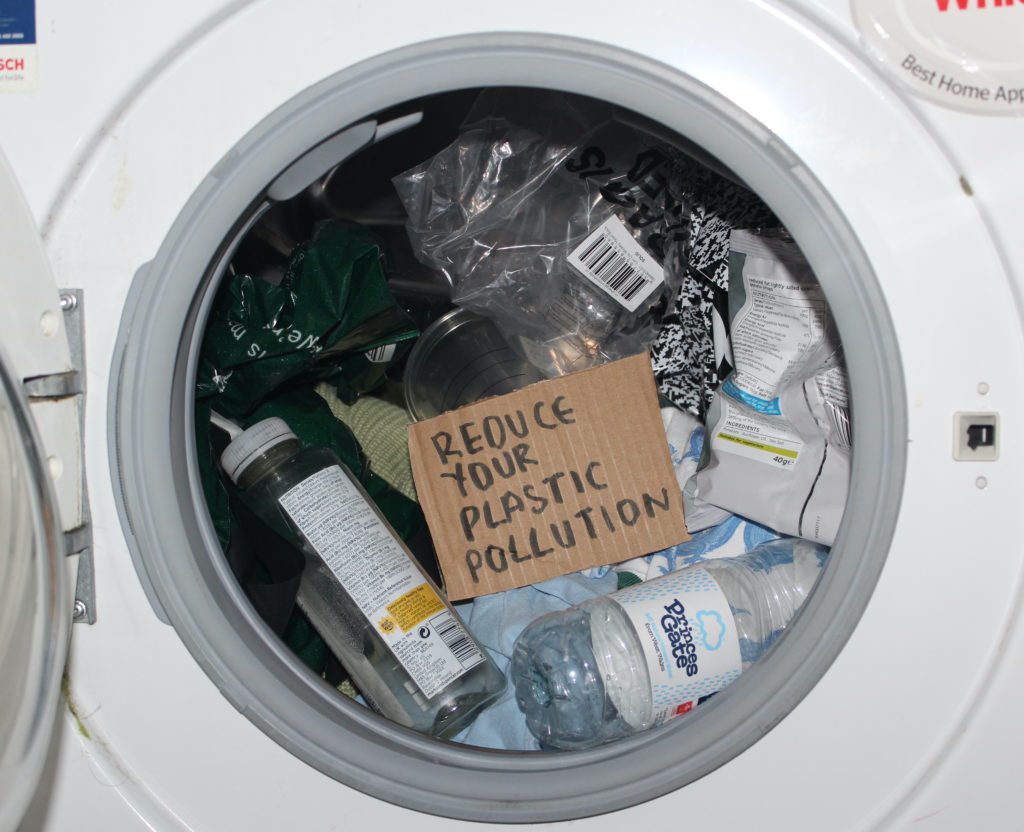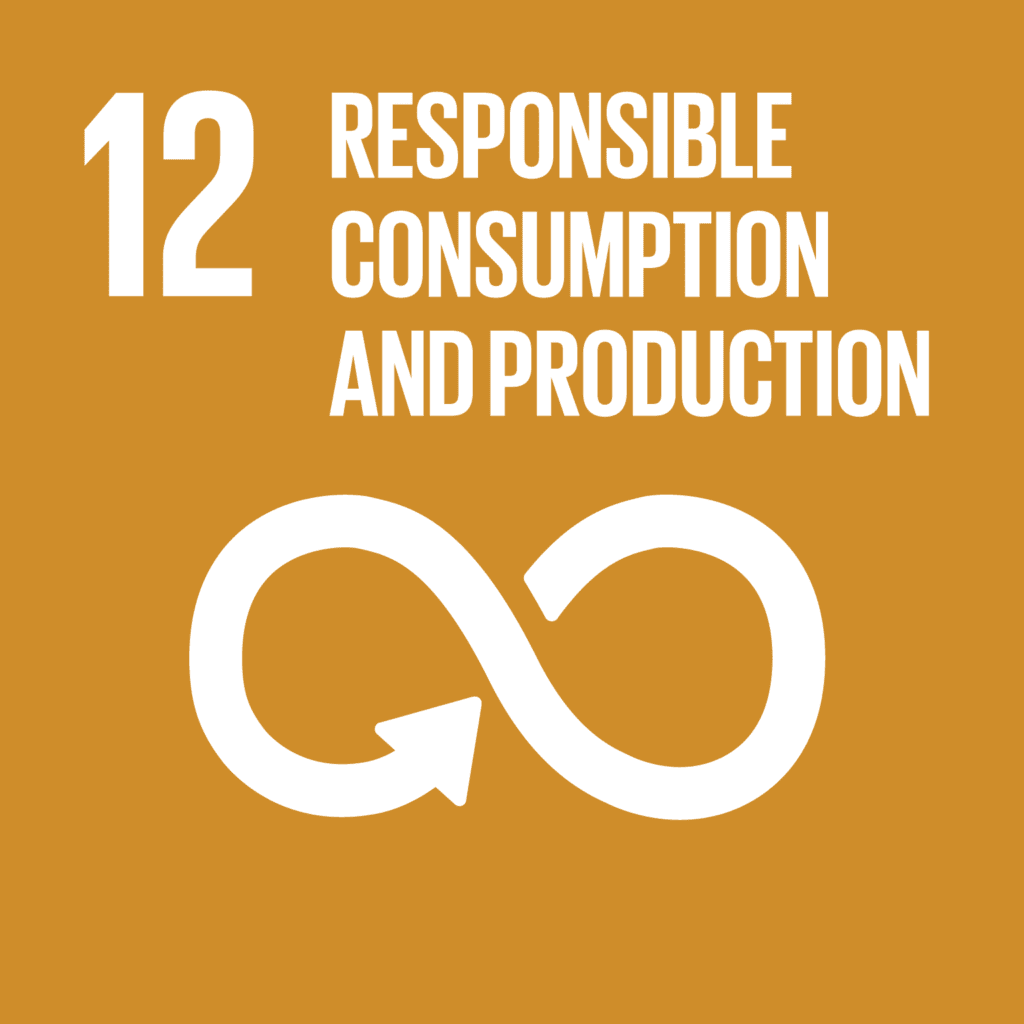‘Concerned about the clothing crisis? Reduce your plastic pollution’ written by Trudi Holland, edit and images by Becky Adams

Three easy tips to reduce your plastic pollution with your wardrobe
Did you know that you could be wearing plastic clothes? Almost 70% of fabrics produced today contain microplastics – tiny plastic particles, which shed every time we wash our clothes. They are far too small to be caught by modern water filtration systems, and have a devastating effect on the environment, and our health. Luckily, there are easy ways to reduce your wardrobe’s plastic pollution; By choosing natural fibres that don’t shed in the wash, and adjusting your laundry routine, you can make a real change.
Here are three easy tips:
- Choose natural fabrics that don’t shed plastic in the wash
- Adjust your laundry routine
- Use your voice and spread awareness
What are microplastics?
Almost 70% of fabrics produced today contain plastics, and many of us aren’t aware of this. Take a look at the labels on your clothes, you may be surprised to see the presences of plastic.
Do you see any of the following materials listed?
- Nylon
- Acrylics
- Polyester
- Spandex
- Polyamide
All of the above are plastics. These synthetic fibres are manmade, and are made up of crude oil. Microfibres are tiny plastic particles, which shed every time we wash our clothes. They are far too small to be caught by modern water filtration systems. Due to this, they can easily enter the ocean and our water systems.
What is the problem with plastic pollution?
Microplastics have a devastating affect on marine life, upon reaching the ocean. The small particles of plastic are often mistake for plankton by fish, due to their size. This affects all aspects of the food chain and sea life, from tiny shrimp to gigantic whales. In fact, 65% of north Atlantic shrimp have been found to have microplastics in their stomachs.
However, the chain doesn’t stop there. It is not only the lives of marine life at stake, but our own. When microfibres find their way into our waterways, they are ingested by the local wildlife, such as fish, which often ends up on our table. Microplastics have been linked to a wide variety of health problems, including cancers, breathing issues such as asthma, and reproductive problems; Some scientists even speculate that that men could be completely infertile by 2045.
Luckily, there are some easy ways you can reduce your wardrobes plastic pollution.
1. Choose natural fabrics that don’t shed plastic in the wash
Avoid buying synthetic clothes in the first place, and choose clothing made of natural fibres that don’t shed plastic in the wash. While recycling your clothing is great, even recycled-polyester clothes still shed microplastics. In fact, older clothes shed even more plastic! Many natural fibres, such as cotton, also have a large environmental and ethical footprint, so buying fair trade, sustainable clothing is key.
Even better, buy natural materials from charity shops. This way you are saving the planet from plastics, as well as reducing the number of clothes that end up in landfill. As a bonus, you are also not directly supporting brands who might engage in unethical practices. Let’s go plastic free, including with our clothes!
2. Adjust your laundry routine
You can easily adjust your laundry routine, to reduce plastic shed. Microfibres are released into water supplied every time we wash our clothes. However, you can clean up your clothes, while also cleaning up the ocean, by making a few easy changes to your laundry routine.
- Wash garments containing microplastics infrequently and spot clean where you can.
- Use cold wash as often as possible. Most washing machines even have an Eco-setting now! This reduces the amount of microfibres shed. If you are worried about the smell, a tiny amount of disinfectant or, even better, white vinegar, will help keep your clothes fresh.
- Use a slow spin, the less friction you cause by having clothing rub together, the less microplastics are released. You can also reduce friction by using liquid detergent, instead of powder detergent.
- Purchase a filter for your washing machine which is designed to reduce the amount of microplastics escaping into the environment.
For even more information, check out our blog post on how to care for clothing correctly!
3. Use your voice and spread awareness
Use your voice to spread awareness of the harmful impact of microplastics, and encourage your favourite brands to reduce their use of synthetic textiles. Some fast fashion brands claim to be environmentally friendly by using recycled synthetics. While it may seem like they may reduce plastic pollution, the reality is very different, as synthetic textiles release 35% of the microplastics that end up in the ocean. Boycott or lobby for change from these brands, and let them know that you disapprove of their practices.
There are steps many of us already take to reduce the amount of plastic we use, such as using a reusable water bottle or shopping bag. But you can make a further difference, by reducing your wardrobes plastic pollution?
Reduce your plastic pollution and enter our sustainable Instagram competition!
We want to give you PRIZES to help make this change happen! All you have to do is follow the steps below for a chance to WIN!
Here’s how to enter:
- Comment 3 emoji’s related to the post on our Instagram @uw_sustain
- Tag 3 friends
- You will automatically be entered into our prize draw.
- Unlimited entries, follow the above steps again. Each time is a new entry.

For more information, see responsible consumption and production
Sources:
Clothes washing linked to ‘pervasive’ plastic pollution in the Arctic. The Guardian
Fit washing machines with filters to reduce microplastic pollution, MPs say, The Guardian
How to stop plastics from your clothes polluting the planet each time you do your laundry. Which
What can you do from home to reduce microfiber pollution from your clothes? Ocean Clean Wash